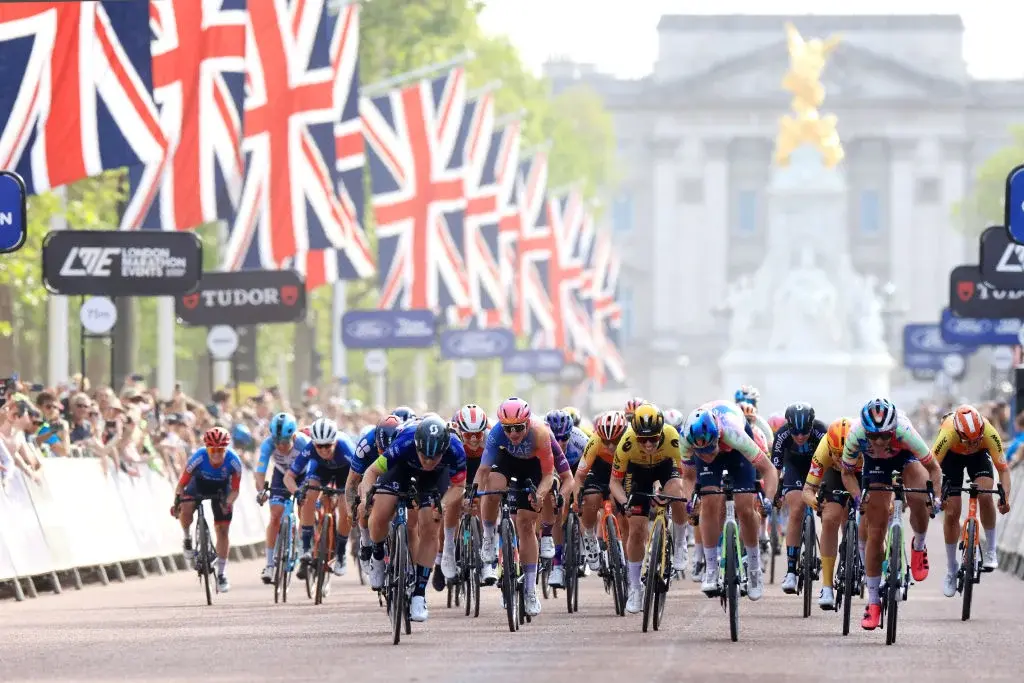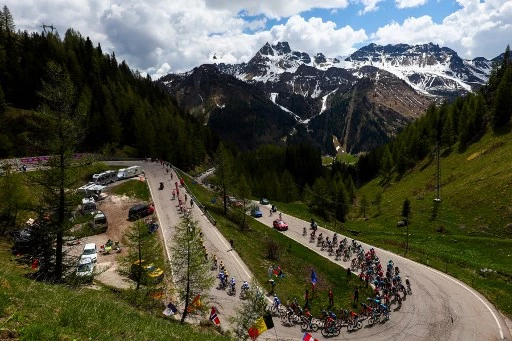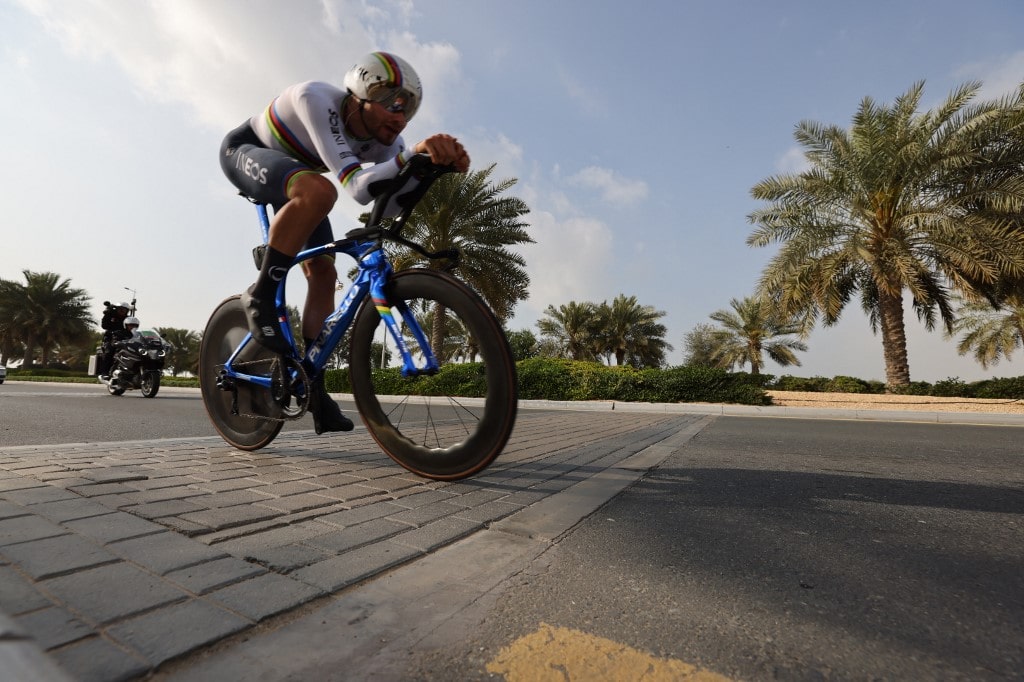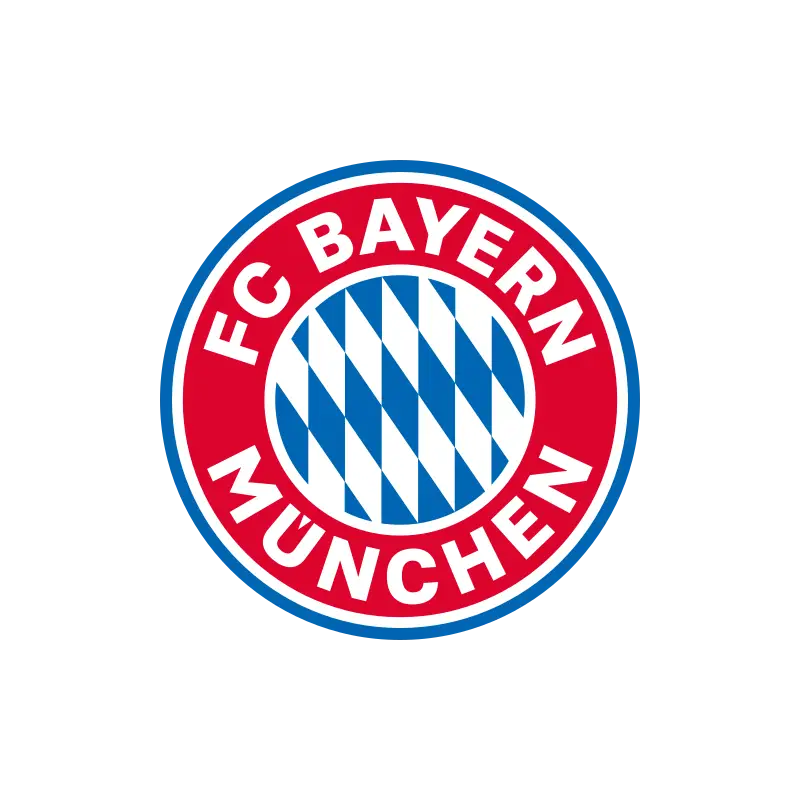Tour de France
- Date: July 1st, 2023
- Location: France
- Stages: 21
- Prize pool: 2,3 million euros
- Winner: Jonas Vingergaard (Jumbo-Visma/NED)
Understanding the Tour de France
The Tour de France is sport cycling’s biggest event. It is part of the three Grand Tours along with the Giro d’Italia and Vuelta a Espana and is comparable to the Indianapolis 500 of its motorsport counterpart. As such, Tour de France betting is very popular and Tour de France odds are widely available from the top online sportsbook.
The modern tour typically has 21 stages, one per day over 23 days (two rest days). Tour de France betting odds are available for many of these stages, such as the mass-start stages. These are categorized into “flat”, “hilly” or “mountain” stages. Time bonuses are generally awarded to the first three finishers in 10, six, and four seconds, respectively.
The climb of Alpe d’Huez is also one of the more prestigious mountain stages as it is challenging and inclement weather conditions have forced changes to this part.
The tour is divided into 21 stages:
- 6 flat stages.
- 7 hilly stages.
- 6 mountain stages with 5 summit finishes (La super Planche des Belles Filles, Col du Granon, Alpe d’Huez, Peyragudes, Hautacam).
- 2 individual time trial stages.
- 2 rest days.
- 1 transfer day.
The time trials, which has first implemented in 1934, is also known as the “prologue”. This decides who gets to wear yellow on opening day.
These are usually two to three-time trials. Other notable stages include the Champs-Elysees, which is the final stage of the Tour de France.
Since 1975, this stage typically starts on the outskirts of Paris and is generally a more easygoing part of the race though there have been some hotly contested races here.
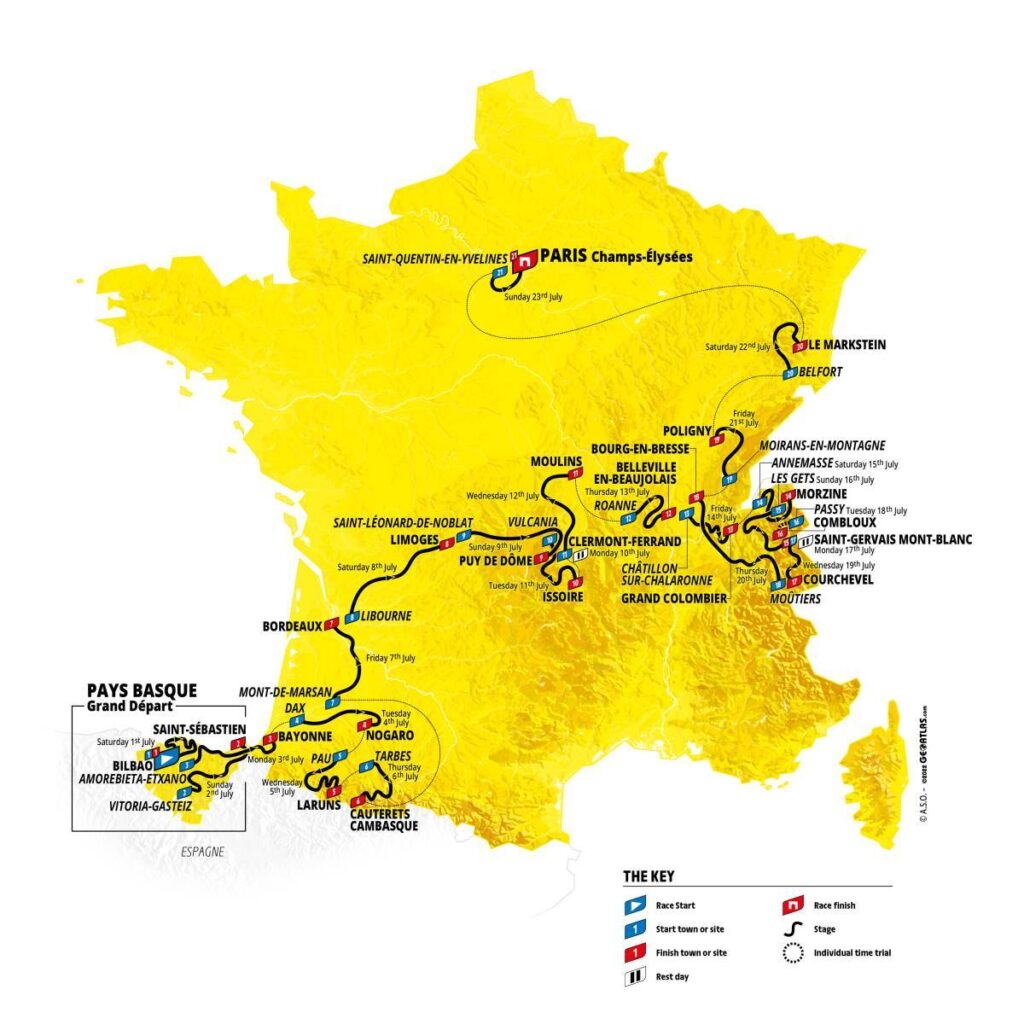
Tour de France Stages
TYPE: HILLY | DATE: SAT 07/01/2023 | START AND FINISH: BILBAO > BILBAO | DISTANCE: 182KM | RESULT: Adam Yates (GBR, UAE Team Emirates) 4hr 22’49”
TYPE: HILLY | DATE: SUN 07/02/2023 | START AND FINISH: VITORIA-GASTEIZ > SAINT-SÉBASTIEN | DISTANCE: 209 KM | RESULT: Victor Lafay (FRA, Cofidis) 4hr 46’39”
TYPE: FLAT | DATE: MON 07/03/2023 | START AND FINISH: AMOREBIETA-ETXANO > BAYONNE | DISTANCE: 193.5 KM | RESULT: Jasper Philipsen (BEL, Alpecin-Deceuninck) 4hr 43’15”
TYPE: FLAT | DATE: TUE 07/04/2023 | START AND FINISH: DAX > NOGARO | DISTANCE: 182 KM | RESULT: Jasper Philipsen (BEL/ Alpecin-Deceuninck) 4hr 25’28”
TYPE: MOUNTAIN | DATE: WED 07/05/2023 | START AND FINISH: PAU > LARUNS | DISTANCE: 163 KM | RESULT: Jai Hindley (Bora – Hansgrohe/ GER) 3hr 57’07”
TYPE: MOUNTAIN | DATE: THU 07/06/2023 | START AND FINISH: TARBES > CAUTERETS-CAMBASQUE | DISTANCE: 145 KM | RESULT: Tadej Pagacar (UAE Team Emirates) 3hr 54’27”
TYPE: FLAT | DATE: FRI 07/07/2023 | START AND FINISH: MONT-DE-MARSAN > BORDEAUX | DISTANCE: 170 KM | RESULT: Jasper Philipsen (BEL, Alpecin-Deceuninck) 3hr 46’28”
TYPE: HILLY | DATE: SAT 07/08/2023| START AND FINISH: LIBOURNE > LIMOGES| DISTANCE: 201 KM | RESULT: Mads Pedersen (Lidl – Trek/USA) 4hr 12’26”
TYPE: MOUNTAIN | DATE: SUN 07/09/2023 | START AND FINISH: SAINT-LÉONARD-DE-NOBLAT > PUY DE DÔME | DISTANCE: 182.5 KM | RESULT: Michael Woods (Premier Tech/ISR) 4hr 19’41”
TYPE: REST DAY | DATE: MON 07/10/2023 | START AND FINISH: CLERMONT-FERRAND
TYPE: HILLY | DATE: TUE 07/11/2023 | START AND FINISH: VULCANIA > ISSOIRE | DISTANCE: 167.5 KM | RESULT: Pello Bilbao Lopez (Bahrain Victorious/BRN) 3hr 52’34”
TYPE: FLAT | DATE: WED 07/12/2023 | START AND FINISH: CLERMONT-FERRAND > MOULINS | DISTANCE: 180 KM | RESULT: Jasper Philipsen (BEL/ Alpecin-Deceuninck) 4hr 01’07”
TYPE: HILLY | DATE: THU 07/13/2023 | START AND FINISH: ROANNE > BELLEVILLE-EN-BEAUJOLAIS | DISTANCE: 169 KM | RESULT: Ion Azagirre Insausti (Cofidis/FRA) 3hr 51’42”
TYPE: MOUNTAIN | DATE: FRI 07/14/2023 | START AND FINISH: CHÂTILLON-SUR-CHALARONNE > GRAND COLOMBIER | DISTANCE: 138 KM | RESULT: Micahl Kwiatkowski (Ineos grenadiers/GBR) 3hr 17’33”
TYPE: MOUNTAIN | DATE: SAT 07/15/2023 | START AND FINISH: ANNEMASSE > MORZINE LES PORTES DU SOLEIL | DISTANCE: 152 KM | RESULT: Carlos Rodriguez Cano (Ineos grenadiers/GBR) 3hr 58’45”
TYPE: MOUNTAIN | DATE: SUN 07/16/2023 | START AND FINISH: LES GETS LES PORTES DU SOLEIL > SAINT-GERVAIS MONT-BLANC | DISTANCE: 179 KM | RESULT: Wout Poels (Bahrain Victorious/BRN) 4hr 40’45”
TYPE: REST DAY | DATE: MON 07/17/2023 | START AND FINISH: SAINT-GERVAIS MONT-BLANC
TYPE: INDIVIDUAL TIME-TRIAL | DATE: TUE 07/18/2023 | START AND FINISH: PASSY > COMBLOUX | DISTANCE: 22.4 KM | RESULT: Jonas Vingegaard (Jumbo-Visma/NED) 00hr 32’36”
TYPE: MOUNTAIN | DATE: WED 07/19/2023 | START AND FINISH: SAINT-GERVAIS MONT-BLANC > COURCHEVEL | DISTANCE: 166 KM | RESULT: Felix Gall (AG2R Citroen Team/FRA) 4hr 49’08”
TYPE: HILLY | DATE: THU 07/20/2023 | START AND FINISH: MOÛTIERS > BOURG-EN-BRESSE | DISTANCE: 185 KM | RESULT: Kasper Asgreen (Soudal Quick-Step/BEL) 4hr 06’48”
TYPE: FLAT | DATE: FRI 07/21/2023 | START AND FINISH: MOIRANS-EN-MONTAGNE > POLIGNY | DISTANCE: 173 KM | RESULT: Matej Mohoric (Bahrain Victorious/BRN) 3hr 31’02”
TYPE: MOUNTAIN | DATE: SAT 07/22/2023 | START AND FINISH: BELFORT > LE MARKSTEIN FELLERING | DISTANCE: 133.5 KM | RESULT: Tajed Pogacar (Team Emirates/UAE) 3hr 27’18” | RESULT: Tadej Pogacar (Team Emirates/UAE) 3hr 27’18”
TYPE: FLAT | DATE: SUN 07/23/2023 | START AND FINISH: SAINT-QUENTIN-EN-YVELINES > PARIS CHAMPS-ÉLYSÉES | DISTANCE: 115.5 KM | RESULT: Jordi Meeus (Bora-Hansgohe/GER) 2hr 56’12”
Tour de France Betting Odds
Betting odds for the Tour de France can fluctuate and vary among different gambling services or bookmakers. These odds reflect the perceived likelihood of certain riders winning the General Classification.
Tour de France betting’s simplest form is the outrights. This is where you bet on who wins the Tour de France. This is available for most of the year though it can be taken off the board if any major changes occur. Closer to the race, usually during the week of, more Tour de France betting lines are opened. Choose wisely!
Team Classification Betting
These cycling betting markets include “Team Classification” which is where you bet on which team will win the Tour de France. Specifically, it is a prize given to the best team as awarded since 1930.
The calculations, as of 2011, are based on:
- The times of the cycling team’s three best riders per stage.
- Time bonuses
- Penalties are ignored.
Young Rider Classification Betting
Betting on the “Young Rider Classification” is also popular. It is a secondary competition outside of the General Classification and began in 1975.
The leader of this classification wears a white jersey as opposed to the yellow jersey of the general category.
The requirements for this classification have changed through the years but generally refers to cyclists under the age of 26.
King of the Mountains Betting
The “King of the Mountains” is another award given to the best climbing specialist of the race. In the Tour de France, it is officially known as the Mountains classification.
Top 10 Betting
Last but not least, a top 10 finish is also a Tour de France betting market. Instead of betting on the outright winner, folks can bet on whether a cyclist will finish within the top-10 of the race. The odds will be much shorter here as there is a better chance of cashing this bet.






